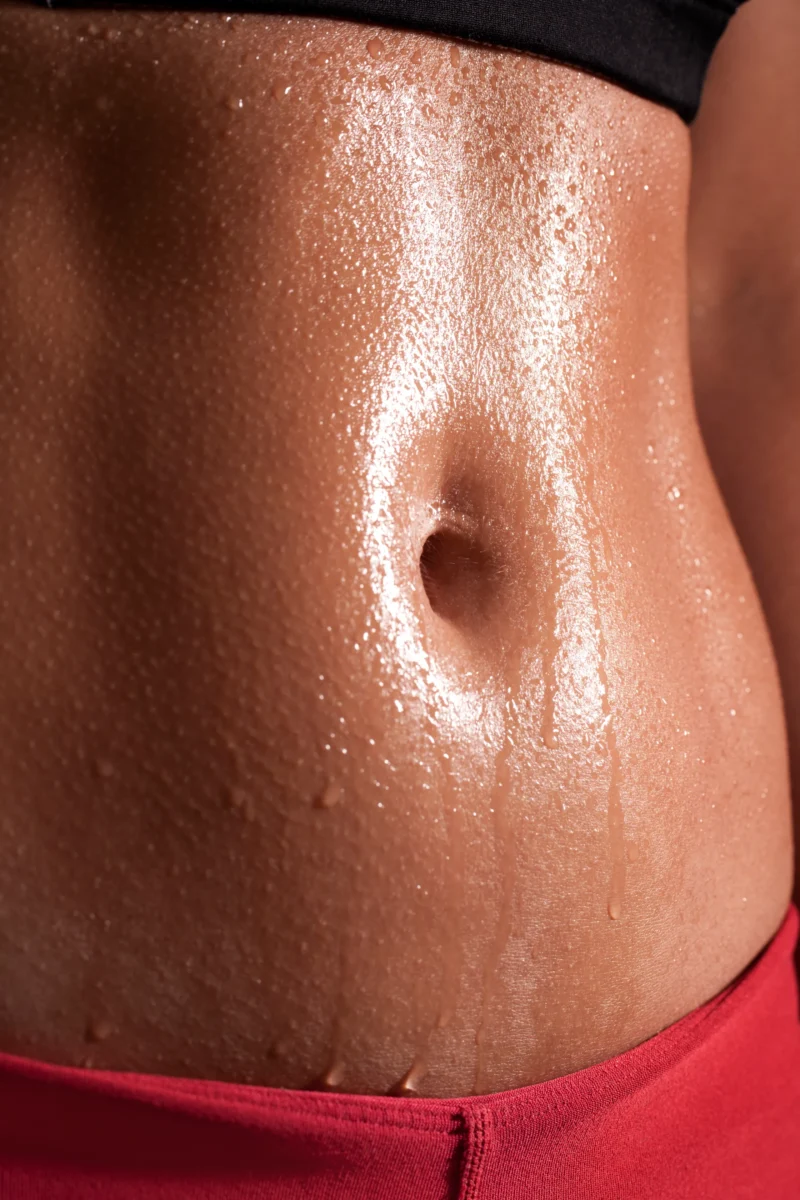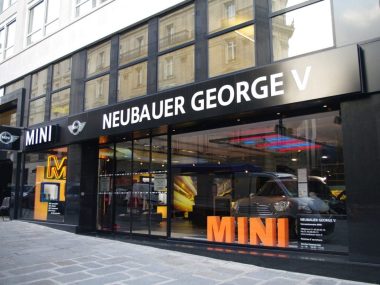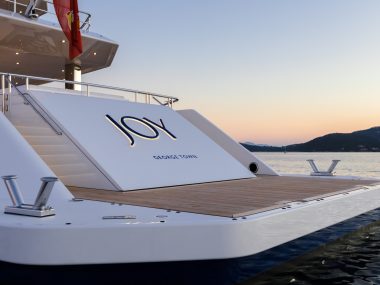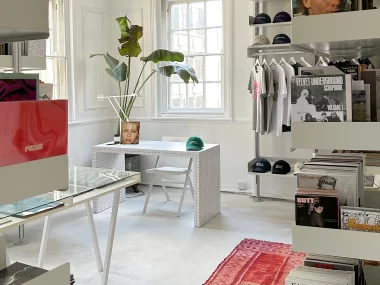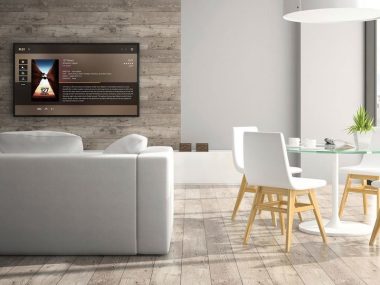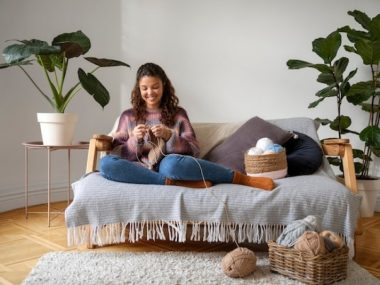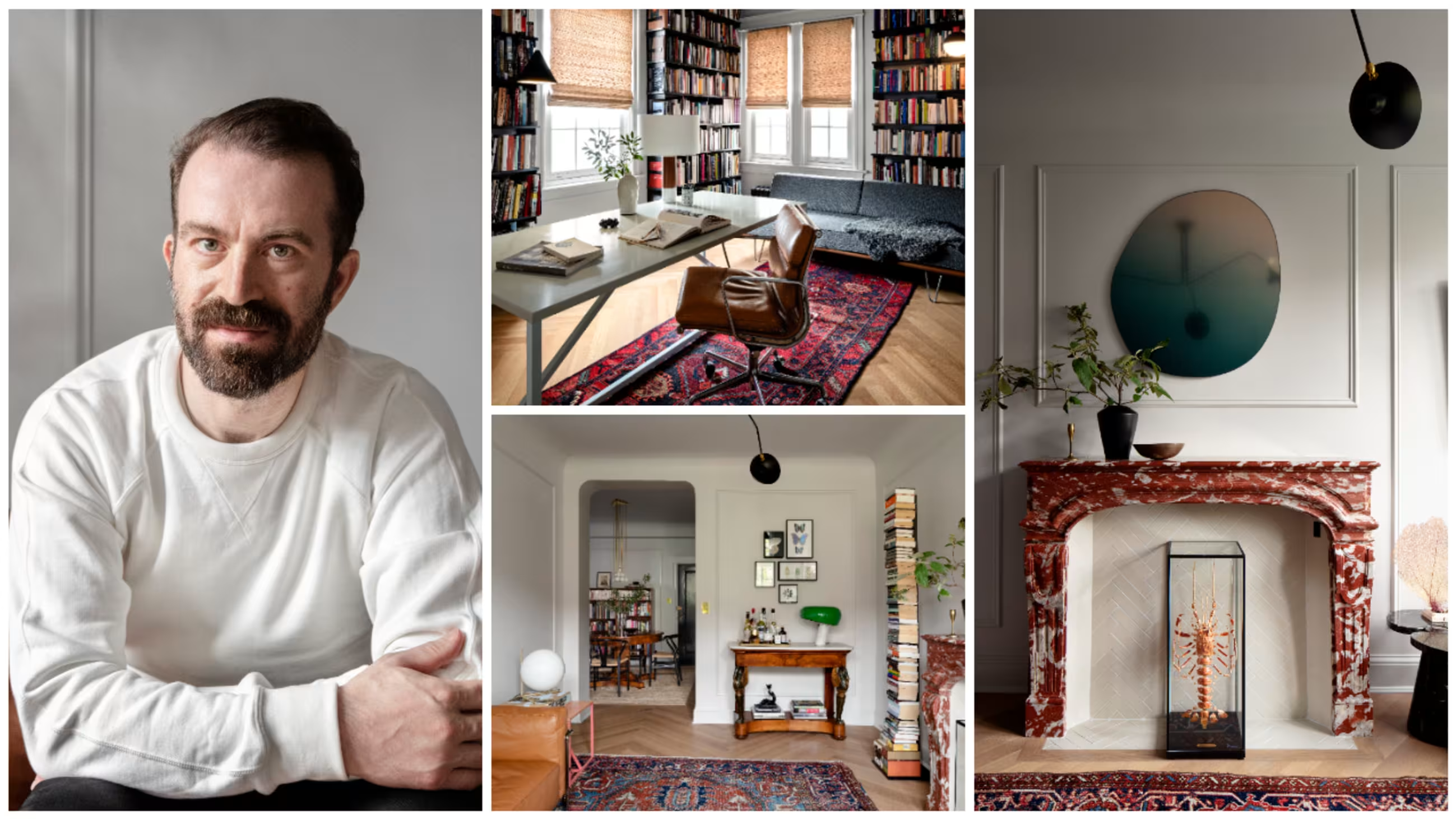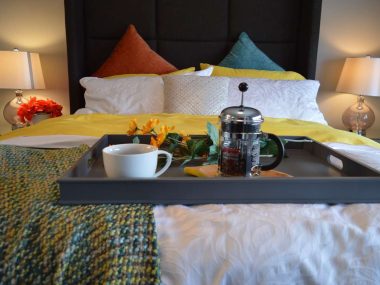It’s hard to pinpoint exactly when everyone—from your favorite celeb to someone you literally or parasocially know—became a Pilates girly. (For me personally, it was the 2022 Met Gala when Lori Harvey credited the Pilates for her immaculately toned abs).
But a quick scroll through IG or TikTok, and we’re slowly being fed video after video of a newer and hotter iteration that might take the top spot in our fitness journey. Now, we wouldn’t necessarily call this a replacement. Instead, think of it rather as an elevated take on a classic. Say hello to hot Pilates.
Pretty self-explanatory, hot Pilates is a form of Pilates that takes place in an infrared heated studio to boost whatever your fitness goals are. “In addition to being a low-impact activity that helps with flexibility, balance, and core strength, there are the mental benefits of exercise,” explains Alexis Colvin, MD, professor of orthopedic surgery at Mount Sinai. “Also, the heat is an additional challenge that is novel.”
Piqued your interest? Below the experts break down everything you need to know about Read this before booking a class and sweating it out.
What Is Hot Pilates?
As Eli Kaylin, instructor and founder of hot Pilates studio Fuze House, describes it, hot Pilates is a low-impact, high-intensity workout that is performed in an infrared heated room. Temperatures during class are typically set to 95 to 100 degrees Fahrenheit and you’ll perform the workout, which mixes traditional and contemporary mat Pilates movements, with props such as light weights, bands, and Pilates rings on a mat.
The Benefits
No matter which form of Pilates you take, Dr. Colvin lists increased flexibility, improvement in joint range of motion, and a strengthened core as the main health benefits of doing Pilates regularly. Studies show that it can also help reduce stress.
When you take hot Pilates, you get the added benefit from the infrared heat. “Not only does [the heat] increase blood circulation, but heat loosens muscles and increases flexibility, which also helps reduce the likelihood of injury,” says Kaylin. Studies also show that heated workouts increase your metabolism and burn more calories compared to non-heated ones.
The Downsides
But you still want to be careful in these high temps and hot Pilates may not be for everyone. Dr. Colvin cautions those with certain health conditions such as asthma, heart disease, low blood pressure, and low blood sugar or those who are pregnant to be careful when signing up for a class. The excessive sweating and high temperatures may cause dehydration and an increased risk of fainting. “If you have medical issues, be sure to get clearance from your doctors before starting,” she says.
Hot Pilates vs. Reformer Pilates
Other than the high temps, Kaylin says that the biggest difference is that hot Pilates is performed on a mat while reformer Pilates is performed on a reformer machine. Reformer machines are equipped with springs, straps, a platform, and a carriage system to give you resistance and intensity for your workout. Hot Pilates, by comparison, depends on your body to give you the same tension.
“It allows for simple movements that leverage your own body weight,” he explains. “Because it’s not performed on a large—and sometimes intimidating—machine, it provides a great foundation to learn the exercises correctly and helps increase focus on breath and mindful movement.” As an added bonus, she says that not being constrained to a platform allows for more versatile and creative movements that may be more challenging, effective, and fun.
But which one is better for you health-wise? That’s just dependent on personal preference and capabilities. Regardless of what type of Pilates you opt for, Dr. Colvin says you’ll experience similar results. “All forms of Pilates are geared towards increasing core strength, flexibility, and balance,” she says.
What to Expect in a Class
Most obvious is that you can expect to sweat it out. “The heat provides an added bonus [of] feeling detoxified and rejuvenated,” says Kaylin. “[And] don’t be surprised if your abs are a little sore the next day.” If you’re taking a class similar to one you’ll find a Fuze House, a workout will last 50 minutes and utilize exercise blocks to help lean and tone your body. Kaylin says movements will be slow and controlled, with a fast pace accompanied by a fun playlist.
Dr. Colvin recommends arriving early to acclimate to the heat before class starts. She also emphasizes the importance of hydrating before, during, and after a session. If you’re starting to feel dizzy or lightheaded, she says take breaks to catch your breath or step out of the room for a bit. Wearing breathable fabric that wicks moisture away from your skin will also help.
So if you’re looking to take your regular pilates session to the next level or looking to hop into the next big thing in fitness, hot Pilates may be the answer. It’s at the very least worth looking into. “There’s no beat to keep up with, dance moves to learn to be in sync with the class, no pressure to run as fast as your neighbor, or lift the heaviest weight,” says Kaylin. “Just give it a try.”
This Danish Practice Design Lights

While redecorating my house a couple of years ago, I spent almost two hours deciding which lamp to buy for one specific location in my living room. In a bid to make my home a more peaceful space, I tried several different lamps and bulbs until I found the right duo for a calm environment. It wasn’t an easy task, but if I had known about this Danish approach to lighting, it would have been easier.
The Danish are, of course, experts at creating a cozy and happy atmosphere—often described using the word “hygge.” But it was only when I obsessed over making my home a happy space that I truly explored the concept. Meik Wiking, the CEO of the Happiness Research Institute in Copenhagen, defines hygge in depth in his book My Hygge Home: How To Make Home Your Happy Place.
Maximizing the natural light as much as possible is always a good idea—for example, place a desk or sofa near a window to take advantage of the natural sunlight. But Wiking also insists on the importance of lighting and specific lamps—like cooler and warmer bulbs—in these moments. You should think about where you put the lamp, what you will use it for, and the overall mood you want to create in a room. “A soft, warm light may be perfect for dinner or a glass of wine, but when you have to wash the dishes, you need a brighter light to see,” Wiking explains.
The Importance of Light “Islands”
To create a warm atmosphere, Wiking recommends creating corners—or islands—of light in your living room. Overhead lights, floor, table, and bedside lamps can all be used to create these illuminated areas. Hygge experts recommend ceiling or wall lamps with glass or fabric shades, instead of more traditional chandeliers, to create a cozy environment.
The Joys of Candlelight
If you aren’t ready to make the financial or time commitment to buying several new lamps, you can achieve the same effect with candles. Their soft, flickering light can help create a calm and relaxing atmosphere at dinner or later in the evening. Choose scented candles to make your home especially inviting—experts in the art of scent-scaping suggest deploying warm and spicy fragrances for living rooms. Think ginger, sandalwood, fig, and pine.

